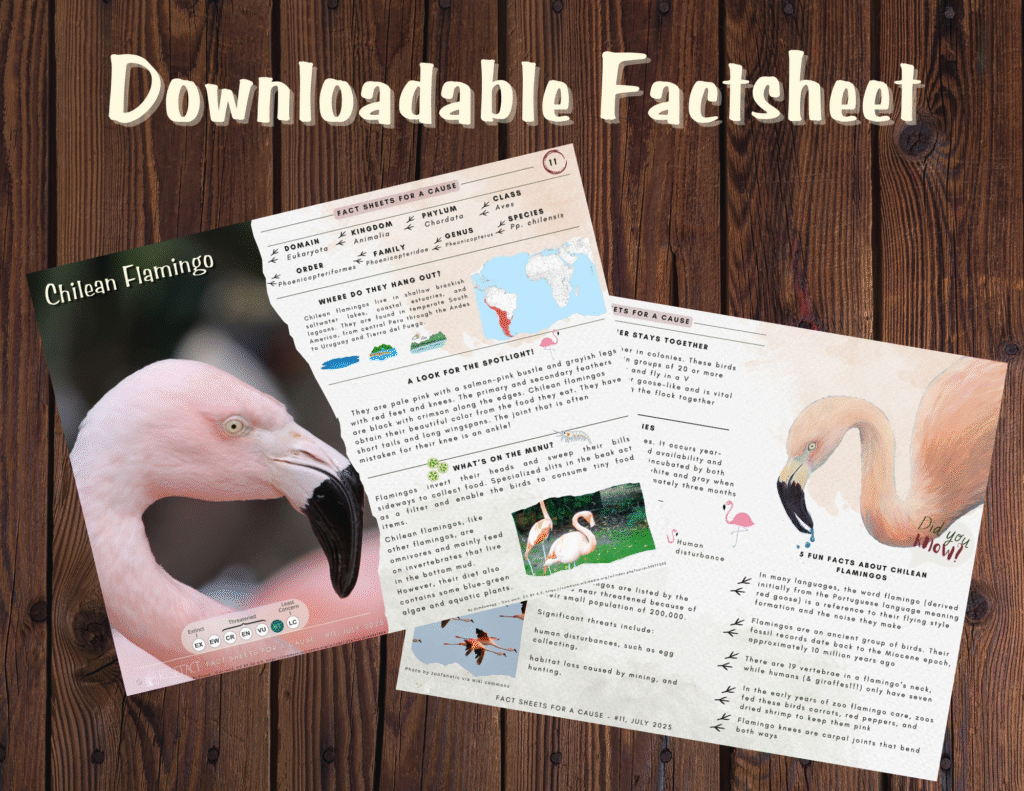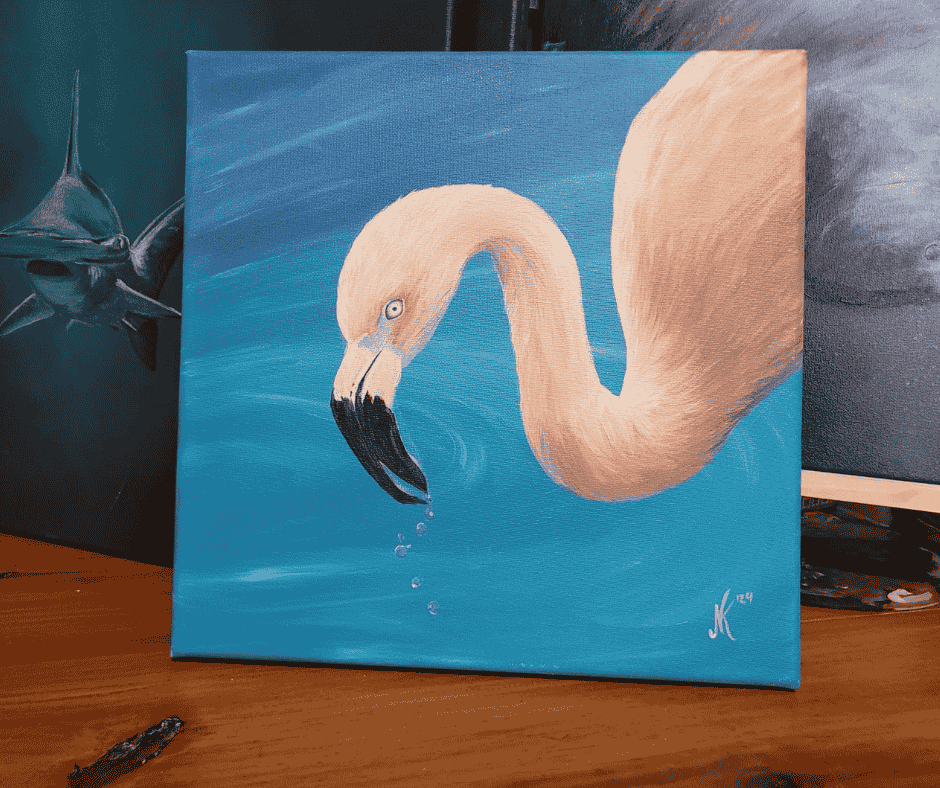
Meet the Chilean Flamingo
The Chilean Flamingo (Phoenicopterus) is the palest of all flamingos. They are found in temperate regions near alkaline water sources. These beautiful creatures have no natural predators, yet their numbers continue to decline.
Scientific Name: Phoenicopterus Chilensis
Phylum: Chordata
Order: Phoenicopteriformes
Genus: Pheonicopterus
Kingdom: Animalia
Class: Aves
Family: Phoenicopteridae
Species: Pp. chilensis
IUCN Redlist Status:
Cilean flamingos are listed by the IUCN as near threatened because of their small population of 200,000. Their population is in decline because of habitat loss and degradation, harvesting, and human disturbance.

The Pinkest of them All
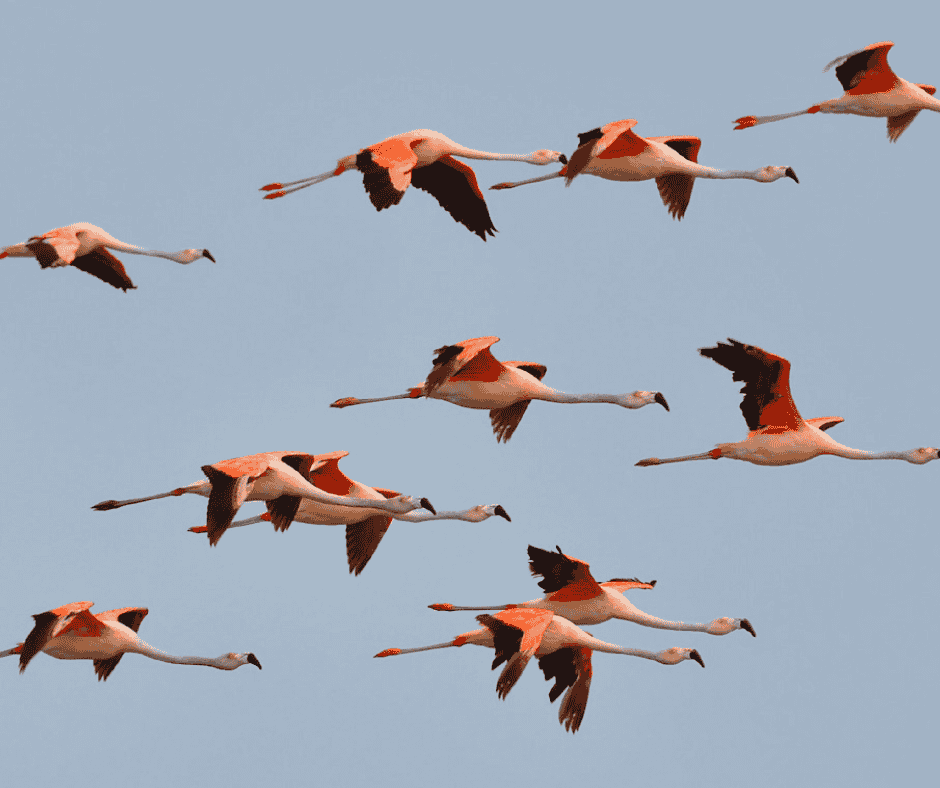
The Chilean flamingos are tall, large-bodied birds characterized by a long neck and a small head. They are pale pink with a salmon-pink bustle and grayish legs with red feet and knees. The primary and secondary feathers are black with crimson along the edges. Chilean flamingos obtain their beautiful color from the food they eat. They have short tails and long wingspans. The joint that is often mistaken for their knee is an ankle. They have bare faces, linear nostrils, and pale yellow irises. Adults weigh 5 to 8 pounds. This subspecies of flamingo is slightly smaller than the Caribbean flamingo.
Where Do They Live?
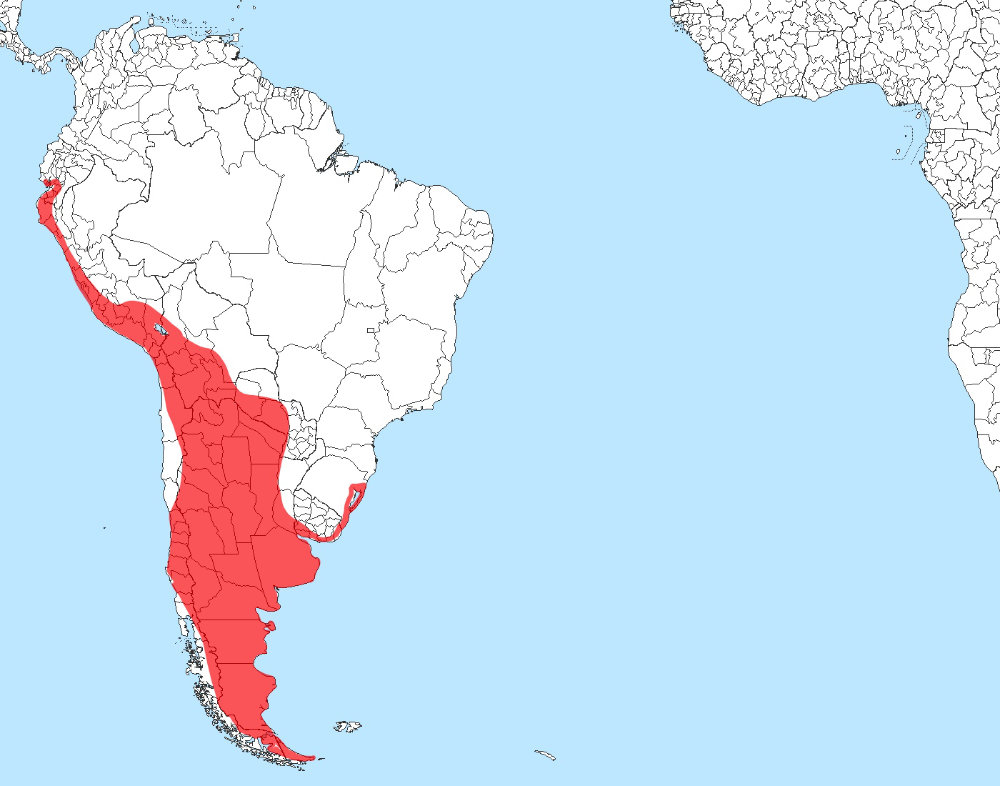
Chilean flamingos live in shallow brackish saltwater lakes, coastal estuaries, and lagoons. They are found in temperate South America from central Peru through the Andes and Uruguay to Tierra del Fuego.
Upside Down Filter Feeder
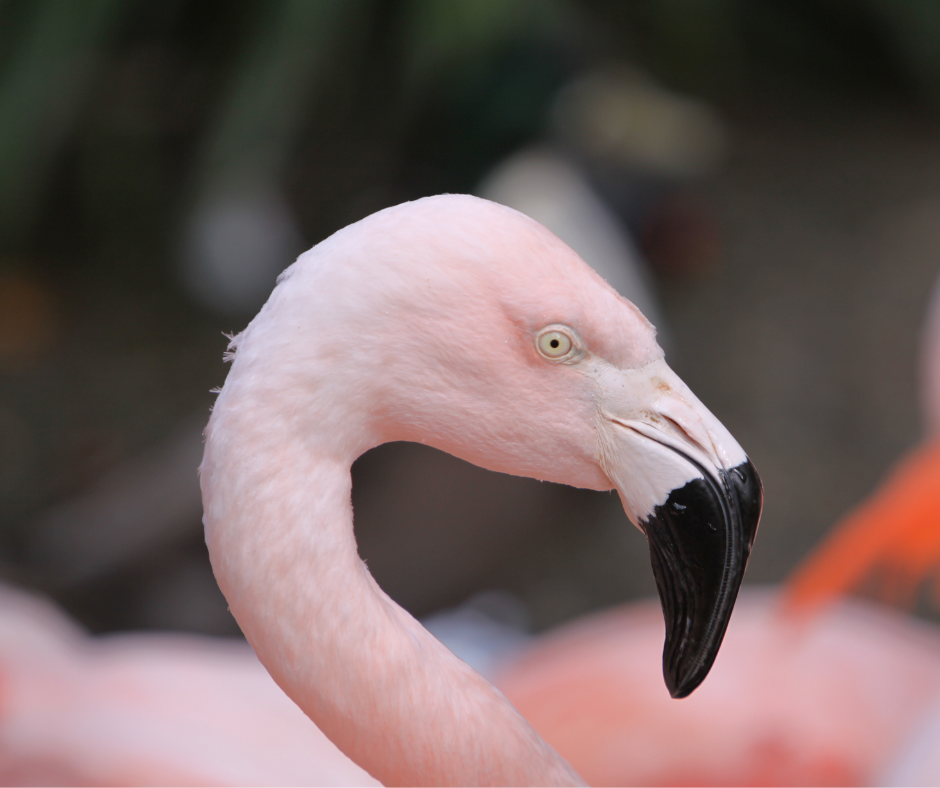
Flamingos invert their heads and sweep their bills sideways to collect food. Specialized slits in the beak act as a filter and enable the birds to consume tiny food items. Chilean flamingos, like other flamingos, are omnivores and mainly feed on invertebrates that live in the bottom mud. These vertebrates include brine flies, shrimps, and mollusks. However, their diet also contains some blue-green algae, diatoms, protozoans, aquatic plants, seeds, insect larvae, small worms, and other organisms found in alkaline water. Chilean flamingos feed in shallow water near the shoreline, or on mud banks, and sometimes obtain food by swimming or upending like ducks. They can eat 10% of their weight in tiny particles each day.
Flock of a Pink Feather Stay Together
They are social birds that live together in colonies. These birds are monogamous and typically found in groups of 20 or more birds. Chilean Flamingos are migratory and fly in a V formation. Their voice is loud and rather goose-like and is vital in locating the young, as well as keeping the flock together when flying.
Pink Families
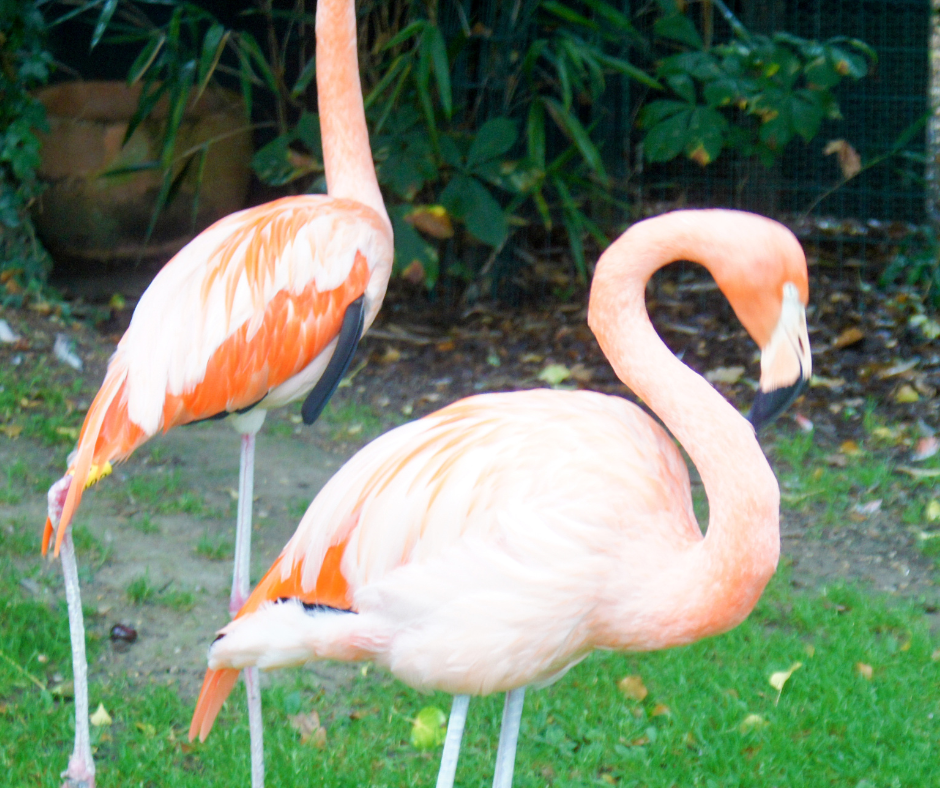
Breeding and nesting occur in massive colonies. It occurs year-round, although it is heavily dependent on food availability and environmental conditions. In years where food is scarce, breeding is skipped altogether. During courtship, both sexes participate in ritualized displays, such as head-flagging followed by wing-saluting. These displays occur before and after actual nesting. Their nests are built by scooping mud and piling it into a cone-shaped mound about 15in in diameter and 1.5 to 2 feet high.
This nest shape helps to prevent flooding and overheating. Nests are built two neck-lengths apart and fiercely defended. One egg is laid and incubated by both adults for 26 – 31 days. Chilean Flamingos are white and gray when they first hatch. After a week, young flamingos form groups, called creches, to stay warm and safe while adults are away feeding. The young are fed until approximately three months of age. Both male and female adults provide their young with a type of milk called crop milk.
5 Fun Facts About Chilean Flamingos
Here are 5 fun facts about Chilean Flamingos that you can add to your bag of information:
In many languages, the word flamingo (derived initially from the Portuguese language meaning red goose) is a reference to their flying style formation and the noise they make
Flamingos are an ancient group of birds. Their fossil records date back to the Miocene epoch, approximately 10 million years ago
There are 19 vertebrae in a flamingo’s neck, while humans and giraffes only have seven
In the early years of zoo flamingo care, zoos fed these birds carrots, red peppers, and dried shrimp to keep them pink
Flamingo knees are carpal joints that bend both ways
Threats to their survival
- The flamingo’s largest problem is humanity. In the past, their tongues were a rare, pickled delicacy, and their plumage was sometimes sought for its vibrant color
- Illegal egg-collecting and a loss of habitat as a result of human activity, such as mining, tourism, and hunting
- Habitat exploitation
Only 200,000 remain in the wild
How You Can Help Save the Chilean Flamingo
- Visit Zoos – Attend zoos that participate in the Species Survival Plan, like the Zoo Atlanta and the Rosamond Gifford Zoo
- Spread awareness – Educate others about the ecological importance of Chilean Flamingos.
- Shop at Artsefact: Part of the proceeds go towards wildlife and habitat conservation.
Chilean Flamingo Factsheet
Would you like a Chilean Flamingo fact sheet?
- Sign up for our newsletter for exclusive updates and wildlife conservation tips (Your welcome email has your Password for the Portal)
- Visit https://artsefact.com/factsheets/ where you can access and download ALL Factsheets & Gain Early Access to NEW Factsheets
Here’s how you can gain access:
Resources
- eBird – https://ebird.org/species/chifla1
- Seattle Public Schools TV YouTube Channel- https://www.youtube.com/watch?v=Yn2No9ikxmE
- Lincoln Park Zoo YouTube Channel – https://www.youtube.com/watch?v=jaVsDAbRo4A
- United Parks & Resorts – https://seaworld.org/animals/facts/birds/chilean-flamingo/
- Zoo Atlanta – https://zooatlanta.org/animal/chilean-flamingo/
- Animal Diversity Web – https://animaldiversity.org/accounts/Phoenicopterus_chilensis/
- Rosamond Gifford Zoo at Burnet Park – https://www.rosamondgiffordzoo.org/experience/animals/birds/chilean-flamingo/
- Herny Vilas Zoo – https://www.henryvilaszoo.gov/animal/chilean-flamingo/
- Houston Zoo – https://www.houstonzoo.org/explore/animals/flamingo-chilean/
- Lincoln Park Zoo – https://www.lpzoo.org/animals/chilean-flamingo/
- The University of Kansas – https://clacs.ku.edu/chilean-flamingo
- Edinburgh Zoo – https://www.edinburghzoo.org.uk/animals/animal-inhabitants/chilean-flamingo

